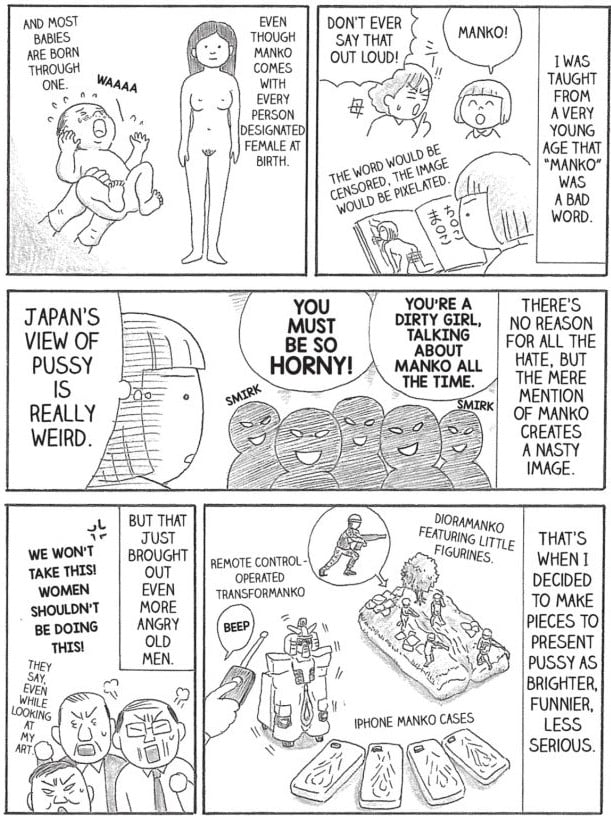Art World
‘Vagina Kayak’ Artist Megumi Igarashi Releases New Memoir
Margaret Cho calls her a 'one-woman revolution.'

Margaret Cho calls her a 'one-woman revolution.'

Sarah Cascone

A Tokyo court may have found Megumi Igarashi guilty of obsenity, but that hasn’t stopped the Japanese artist from producing her empowering vagina-inspired art. Within days of Igarashi’s conviction in May over her “vagina kayak” project, Hyperallergic reports, she published an English translation of her manga memoir, titled What Is Obscenity? The Story of a Good For Nothing Artist and Her Pussy.
The book is published under the nom de plume Rokudenashiko, or “good-for-nothing-girl,” which Igarashi also uses for her work as an artist. “Japan’s view of pussy is really weird,” she explained in the memoir.

Rokudenashiko, What Is Obscenity? The Story of a Good For Nothing Artist and Her Pussy cover. Courtesy of Koyama Press.
Igarashi was arrested over her 3-D “vagina kayak” project in July 2014, and again that December. She could have faced up to two years in prison, but prosecutors demanded a 800,000 yen ($7,000) fine instead.
Under this month’s ruling, which found the artist guilty of obscenity for distributing the digital files based on her vagina, but not for displaying art based on those files, Igarashi was fined half that amount.
Through her artwork, Igarashi explained, she strives to present anatomy as “brighter, funnier, [and] less serious.” The drawing are similarly cheerful and cute, but readers can likely expect for the book to show up on lists of banned graphic novels in the near future.

Japanese artist Megumi Igarashi (C) displays a sign reading “a part is not guilty” during a briefing with her lawyers in Tokyo on May 9, 2016. Courtesy of KAZUHIRO NOGI/AFP/Getty Images.
The artist began by making plaster molds of her vagina, but ran afoul of the law when she began exploring 3D technology. Contributors to a successful crowdfunding campaign to create a kayak based on a scan of Igarashi’s vagina received a copy of the digital file, with which they were encouraged to create their own manko art.
In the beautifully-illustrated memoir, which is anything but crude, Igarashi recalls growing up in a country where the penis is celebrated, but to even say the word vagina, or manko, is considered obscene. “There are so many other problems going on and this is what you’re losing your head over?” she told the Globe and Mail about the controversy.

Rokudenashiko, What Is Obscenity? The Story of a Good For Nothing Artist and Her Pussy excerpt. Courtesy of Koyama Press.
To date, the artist’s new work has been well-received. “Rokudenashiko is a one-woman revolution,” writes comedian Margaret Cho in a blurb for the graphic novel. “I’m moved and laughing and crying and angry and overjoyed by her work. Her greatness is overwhelming and right on time.”